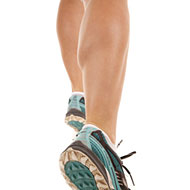- Aromatherapy (36)
- Benefits of Yoga (282)
- Home Remedies (1087)
- massage therapy (9)
- Preventive Therapy (135)
- Running (41)
- Skin Care (15)
- Stress Relief (25)
- Stretching (5)
- walking (33)
- Womens Health (14)
- Yoga Benefits for Pregnant Women (16)
- Yoga Benefits for Students (3)
- Yoga for Children (11)
- Yoga for Holistic Living (37)
- Yoga for Midlife Crisis (3)
- Yoga for Senior Citizens (2)
- Yoga for the Workplace (1)
- Yoga Health Tips (185)
- Yoga Practice during Menstruation (5)
Running And Shin Splints

Running and shin splints are a commonly observed combination especially with beginning runners as they try to achieve too much too soon. In case of anterior shin splints the runner will feel the associated pain on the outside of their lower leg just along the shin. However in cases of posterior shin splints the pain is felt in the soft tissue behind the bone. This happens on account of damage done to the muscles on the inside of the lower leg. Running and shin splints occur mostly because of weak shin muscles and tight calf muscles. There are also other external factors that may further aggravate the injury such as running on hard surfaces which tends to put added pressure on the front leg muscles. Some people also tend to supinate or pronate while they are running which causes the front leg muscles to work even harder to keep the individual’s feet stabilized. A runner can further aggravate such a biomechanical flaw by wearing shoes not meant for running or shoes without proper support. In most cases, the commonly observed cause for shin splints both anterior and posterior is over training. Those who have suffered from running and shin splints or are prone to shin splints can treat the same by using an ice pack on the lower legs after they run. The ice pack should be kept for ten to fifteen minutes for every 5-6 hours ensuring that the foot is elevated while applying the same. The most important point to remember while treating shin splints is not to run with the pain; and hence to take a break from running altogether for a few days. While resting through a shin splint which is mostly caused by overrunning one may then practice stretching of the lower leg muscles and the calves. If the shoes are the reason behind the shin splints then one may approach an expert on the same from a specialty store to get advice on the right type of shoe and if extra padding or cushioning is required depending on the style of running of the individual and the feet. Sometimes a quick solution to prevent shin splints is to insert an easily available heel lift in the shoe so that the calves don’t have to stretch too much while running. Additionally, one’s posture while running also plays an important role in preventing shin splints and hence it is necessary to ensure that one does not lean forward excessively while running as this pulls the calf muscles harder.
- RSS Feeds -
- All posts
- All comments
- Knee Exercises In Yoga The knee joint is a critical joint in the leg. It allows the leg to bend half...
- Running Technique For the benefits of running to be experienced it is important that proper run...
- Running Tricks For Beginners Before taking up any beginners running program or even a beginner walking pro...
- Calculate Running Speed Running is one of the best forms of exercising, as it is an excellent calorie...